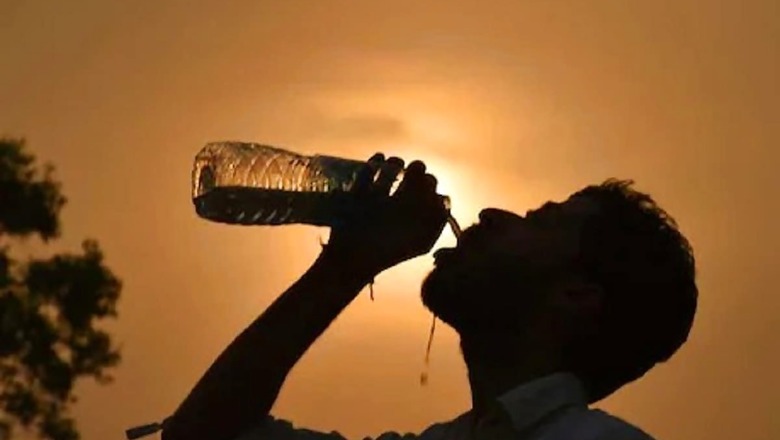
views
Heatwaves have claimed more than 17,000 lives in 50 years in India, according to a paper recently published by the country's top meteorologists. The paper said there were 706 heatwave incidents in the country from 1971-2019.
The research paper was authored by M Rajeevan, Secretary of Ministry of Earth Science, along with scientists Kamaljit Ray, S S Ray, R K Giri and A P Dimri, earlier this year. Kamaljit Ray is the lead author of the paper. Heatwave is one of the extreme weather events (EWE). In 50 years (1971-2019) EWE killed 1,41,308 people. Of this, 17,362 people were killed due to heatwave — a little over 12 percent of the total deaths recorded, the study said.
The maximum heatwave deaths were in Andhra Pradesh, Telangana and Odisha, it added. Core Heatwave Zone (CHZ) is the most prone area for heatwave (HW) and severe heatwave (SHW) with the highest frequency of occurrence during the month of May.
The CHZ covers states of Punjab, Himachal Pradesh, Uttarakhand, Delhi, Haryana, Rajasthan, Uttar Pradesh, Gujarat, Madhya Pradesh, Maharashtra, Chhattisgarh, Bihar, Jharkhand, West Bengal, Odisha, Andhra Pradesh and Telangana. The study assumes significance in the backdrop of recent heat waves in different parts of northern hemisphere. Earlier this week, an intense heatwave swept through parts of Canada and the US in north America claiming lives of scores of people. Vancouver recorded a record-breaking temperature of more than 49 degrees Celsius.
In India, the north Indian plains and the hills also experienced heatwave. In the plains, temperatures rose above 40 degrees Celsius in many parts earlier this week. The paper also noted that there is an increase in mortality due to heatwaves, an extreme weather event, and lightning for vulnerable states.
Heatwave over a station is declared only when the actual temperature of the station is 40 degrees Celsius for the plains and 30 degrees Celsius for hilly regions. However, when the maximum temperature is 40 degree Celsius for coastal stations and 45 degrees Celsius for other stations, conditions are declared as heatwave.
A heatwave is declared when the actual maximum temperature is greater than the normal maximum temperature which is greater than 40 degrees Celsius. In a written response to a question on heatwaves in Lok Sabha in January 2020, Earth Sciences minister Harsh Vardhan had said the latest studies show an increase in temperatures as well as the occurrence of heatwaves in many parts of the country during the recent years.
One of the reasons for the increase in heat waves is global warming associated with the increase in greenhouse gasses like carbon dioxide, methane etc in the atmosphere, he had said. In 2017, there were 30 instances of heatwave in the country — Andhra Pradesh (1), Jharkhand (2), Maharashtra (6), Odisha (8), Telangana (12), West Bengal (1).
The year 2018 recorded 12 instances of heatwave — Uttar Pradesh (2), Maharashtra (5), Jharkhand (1), Kerala (3), Chhattisgarh (1). In 2019, there were 26 incidents of heatwave in Maharashtra (15), Kerala (6), Bihar (4), Rajasthan (1).
Heatwave is also associated with health risks. Four common health impacts resulting from excessive exposure to heatwaves include dehydration, cramps, exhaustion and heatstroke. It is also learnt that there is a sharp rise in the number of cases of acute gastroenteritis and food poisoning due to spoilage of food and reduction of its shelf life owing to high temperatures. There is also a rise in the number of cases of anxiety, palpitations, nervousness and behavioural change linked to extreme temperature rise, Vardhan had said.
Read all the Latest News, Breaking News and Coronavirus News here.




















Comments
0 comment